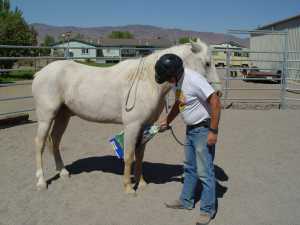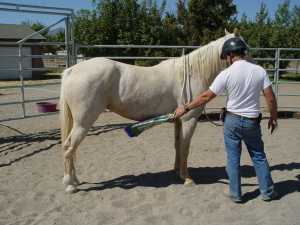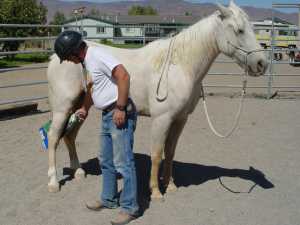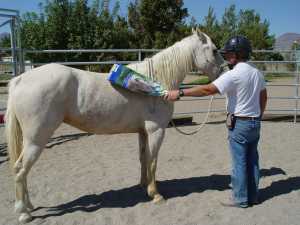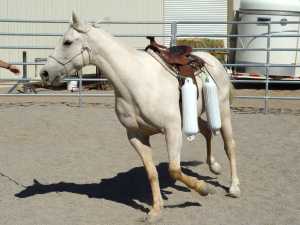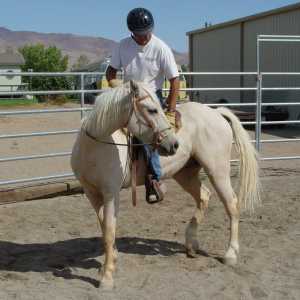Making and Using a
|
Going down the front legs
|
|
Getting to those scary places
After the horse is fully confident with the thumper along his shoulders, back, head, chest and front legs we can then work on that scary underbelly and inside his hind legs. Please note the following safety issues.
|
Contacting the belly from a safe position
|
|
"Thumping" the horse
Once the horse is comfortable with being touched we can up the ante. The thumper allows us to make quite a bit of noise without causing the horse any physical discomfort. Our next step is to repeat the process while "thumping" the horse. Once the horse is used to being touched, and then being slapped by a bulky, noisy object, he will then have less of a tendency to overreact to unexpected stimulus when being handled or ridden. The following are key points to consider when "thumping" any horse. |
Thumping the horse
|
|
Thumping helps get the horse confident around bulky and noisy objects in a more controlled environment before attaching circingles, saddles and climbing on board.
Moving to the next level
|
The ultimate objective
|
Return to Part One
See our feature -
Training Horses the Wal-Mart Way
Training Horses the Wal-Mart Way
|
Important Note: If you take on the project of developing an untrained horse, everybody will want to give you advice. Don't act on any advice, including the ideas offered in this site, unless it makes sense to you and fits your individual situation. Your abilities and the sensitivities of your horse(s) may differ from the examples given. Be alert and rational with your actions so neither you nor your horse will get hurt. This information is offered as illustrations of what we do and the reader must apply common sense since he or she is solely responsible for his or her actions. Happy trails!Press "Back" to return to the page that brought you hereGo to Case Study SectionReturn to Training SectionReturn to Wild Horse MentorsReturn to KBR World of Wild Horses and BurrosGo To
|

